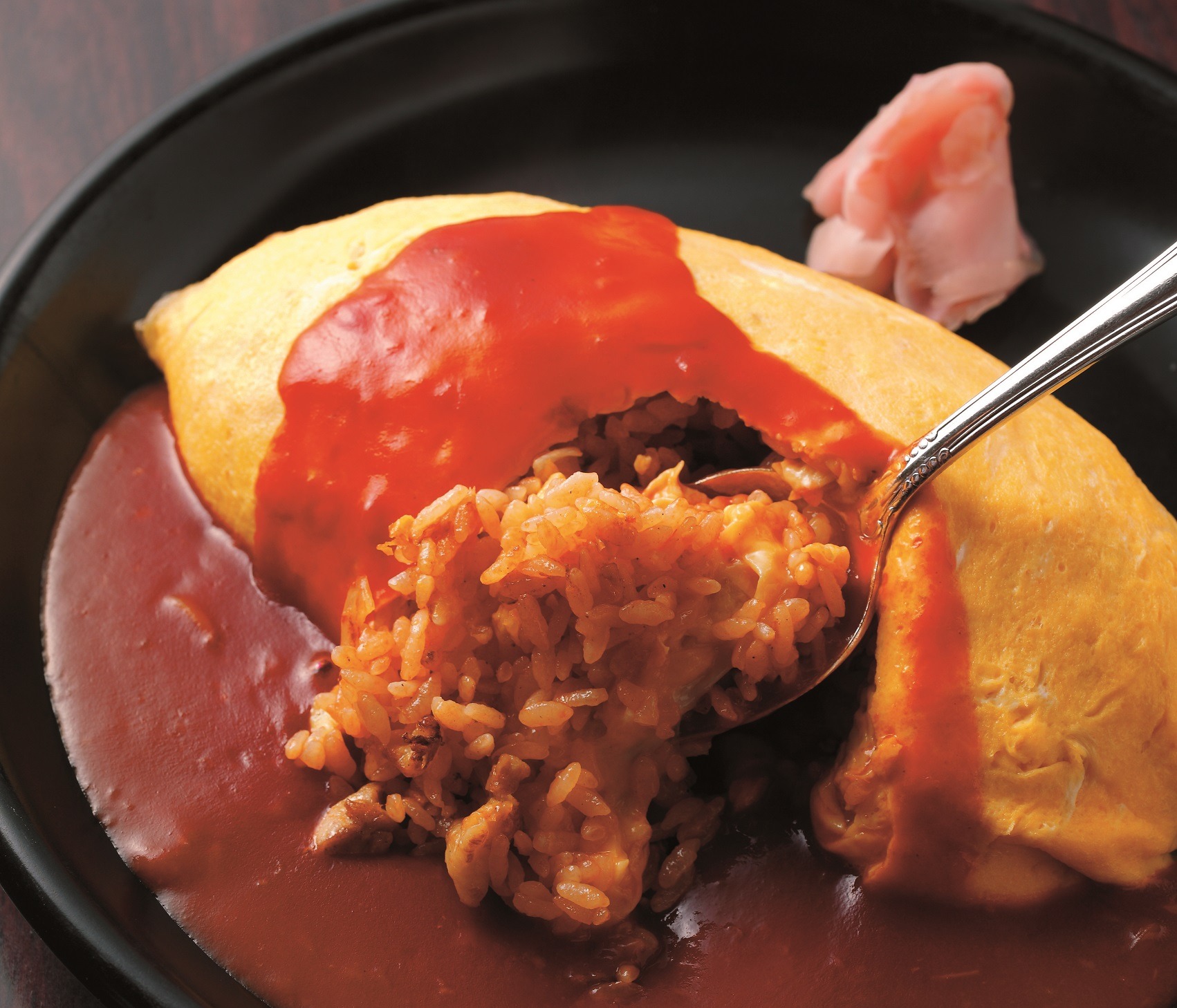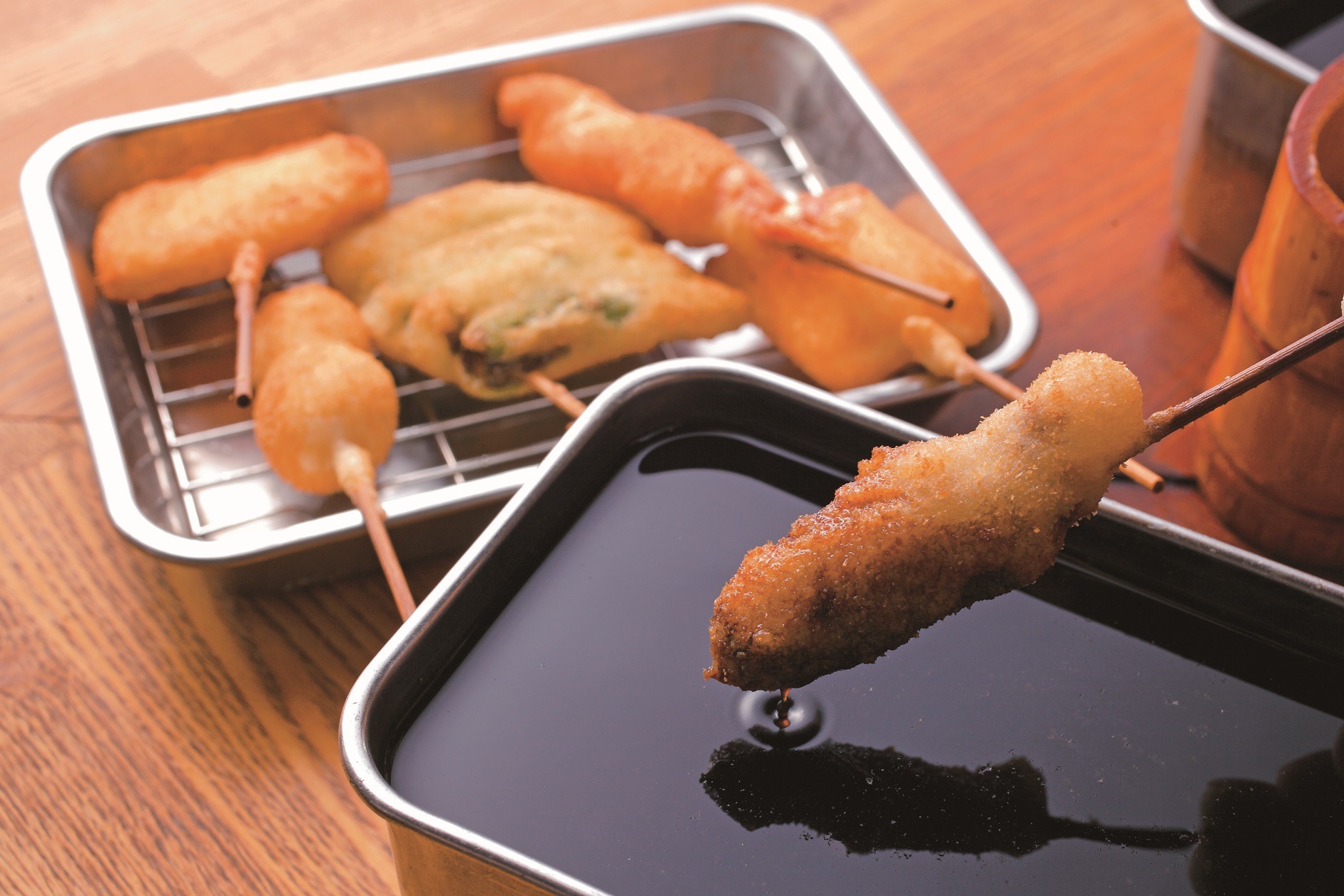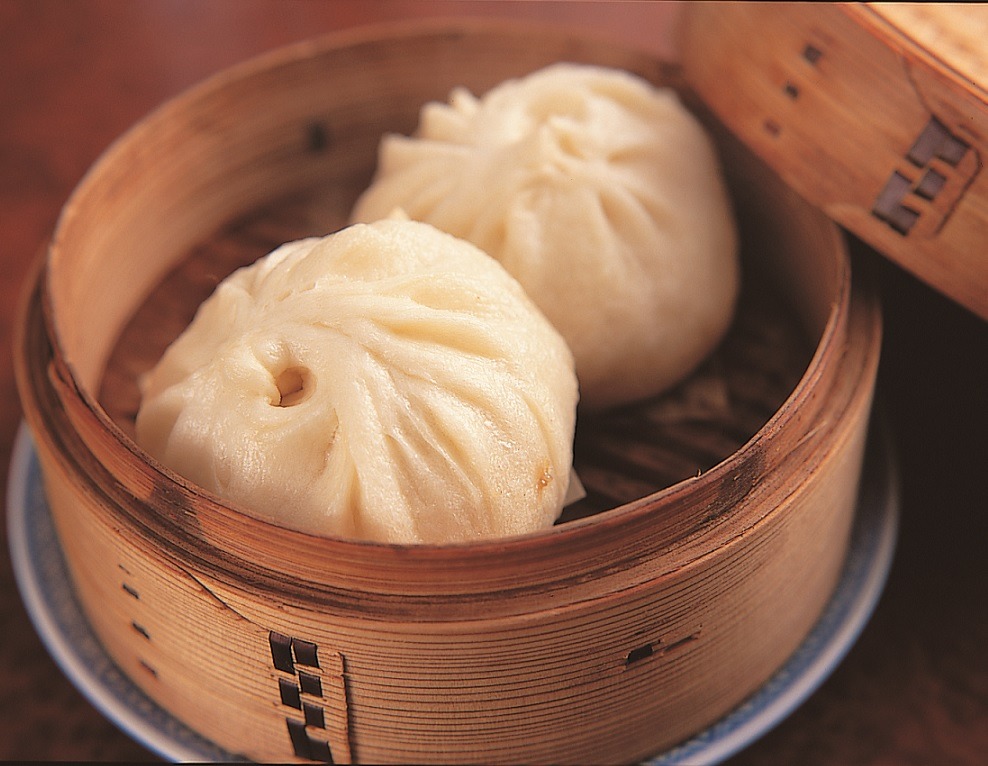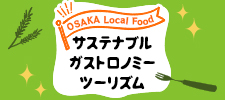Okonomiyaki

Along with takoyaki, it is a soul food for Osaka people. It's the same way of dissolving the flour in the stock, cabbage is essential, pork is popular, and as the name okonomiyaki suggests, you can use whatever you like.
Spread the dough flat on the iron plate and bake it. It is said that adding sauce, mayonnaise, green seaweed, etc. influenced takoyaki. There are various theories about its origin; some say it evolved from Tokyo's Monjayaki to Dondon-yaki at street food stalls, and then developed into Issen Western cuisine using sauce in the Kinki region, or that it evolved from an elegant game dish where customers grilled it to their liking on a griddle. There are various things like how it started.

The current style of okonomiyaki was established after the war.
I added cabbage to give it more volume, and it turned from a snack to a staple meal. Another feature of Osaka's okonomiyaki is that yams are mixed into the batter to create a fluffy texture.
Many specialty stores do not let customers cook the food, but instead have the owner or staff grill it for them. After the 1970 Osaka Expo, it became known nationwide as an Osaka specialty. Nowadays, there are more and more restaurants where you can choose from a variety of toppings, such as cheese, kimchi, and mochi, making okonomiyaki even more enjoyable.
Modern yaki, which is similar to yakisoba, is also popular. Of course, it also appears as a standard side dish at home. Making okonomiyaki a side dish for white rice is a combination of carbohydrates and carbohydrates. This often surprises people outside of Osaka. Become a hero among your family by skillfully using a iron and flipping okonomiyaki.
Other recommended gourmet foods
-
 Udon (I like udon)
Udon (I like udon)Osaka's udon noodles are appealing because of the harmony between the soft texture of the noodles and the gentle combination of kelp and bonito flakes.
-
 Takoyaki
TakoyakiTakoyaki is Osaka's representative fast food that can be bought at a food stall and easily eaten on a street corner. It has a surprisingly short history, and it is said that the number of stores began to increase in the town in the 1950s.
-
 Osaka sushi
Osaka sushiThe representative dish of Osaka sushi is box sushi. It is a type of ``oshizushi'' in which the ingredients are placed in a mold along with vinegared rice and pressed together.
-
 Omelette rice
Omelette riceThe owner felt sorry for his regular customers who had stomach problems and had to eat omelets and white rice every day, so when he served ketchup rice wrapped in a thinly-cooked egg, the customers were overjoyed.
-
 Kushikatsu
KushikatsuOsaka's kushikatsu is famous for not allowing double dipping. Meat and vegetables are threaded onto skewers, coated with water-soluble flour, coated with breadcrumbs, and fried in oil.
-
 Kappo cuisine
Kappo cuisineThe Japanese restaurant style that flourished during the Edo period began to go out of fashion, and the Japanese style was born as people sought Japanese restaurants that could be enjoyed more casually.
-
 paper pot
paper potThe mysterious paper pot also originated in Osaka. Anyone would be surprised to hear that you can set paper on fire.
-
 Conveyor belt sushi
Conveyor belt sushiSmall plates of sushi flow on a conveyor, and customers pick up the pieces they like and eat them. The casual, semi-self-service style with inexpensive and transparent checkout is easy to use for families and tourists alike, making it extremely popular.
-
 Pork bun
Pork bunAfter the Meiji Restoration, it is said that the Chinese steamed buns that were introduced to Chinatown were adapted to suit the tastes of the Japanese people.


